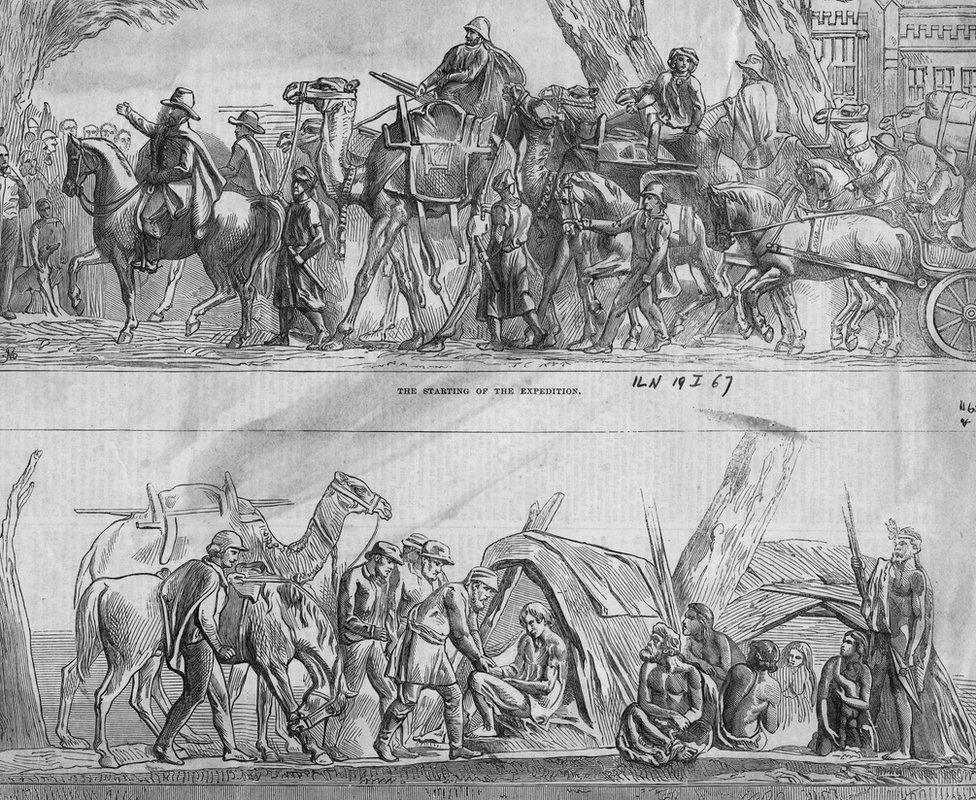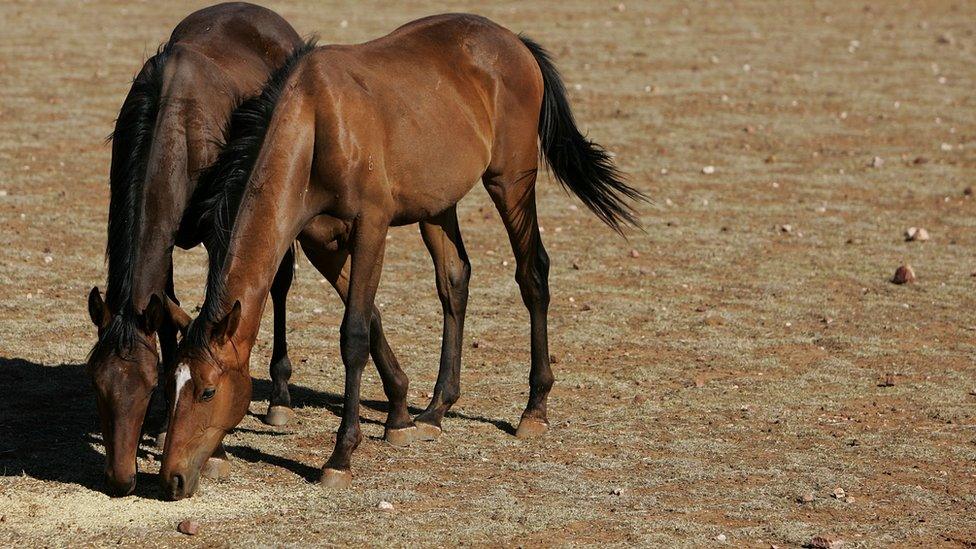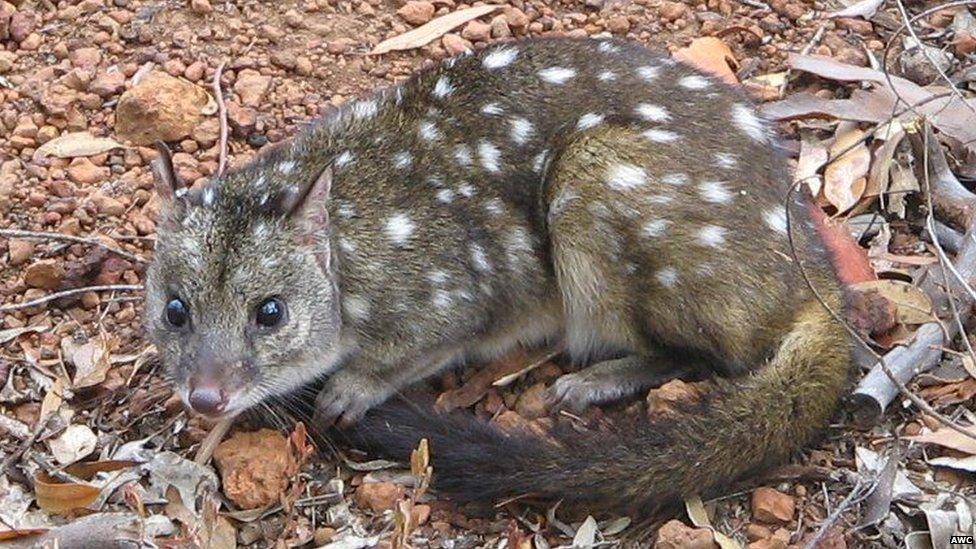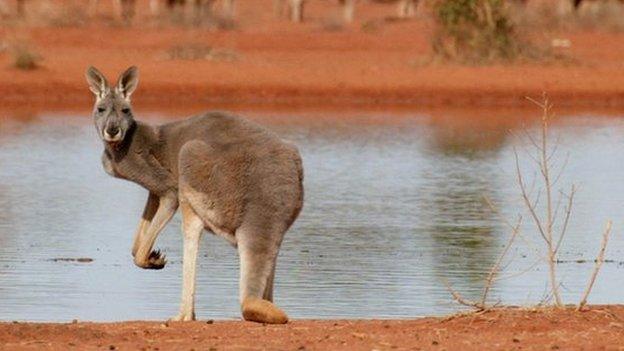Snowy Mountains brumbies cull sparks Australian anger
- Published

The brumbies are a central part of Australian folklore thanks to bush poet Banjo Paterson's 1890 poem, The Man From Snowy River
A plan to cull almost all the famous wild horses in Australia's Snowy Mountains region has been criticised as "horrific" by conservationists.
The New South Wales government wants to cull about 90% of the horses, known as brumbies, in the alpine region.
Scientists have argued the horses damage fragile ecosystems and harm native wildlife.
The brumby is part of Australian folklore, featured in television shows and romanticised in poetry.
The wild horses even appeared at the opening ceremony of the 2000 Sydney Olympics.
But in the Snowy Mountains they are seen as a feral pest that is damaging sensitive waterways, home to critically endangered native species.
The state government wants to reduce their numbers from 6,000 to just 600 over the next two decades.

Horses are not native to Australia but arrived with settlers in the late 18th Century
Addressing the media on Sunday, state Environment Minister Mark Speakman described the issue as "emotive and complex".
"There are diverse opinions in the community and often deeply held views, which polarise stakeholder groups," Mr Speakman said.
"It is clear, however, that the broader community values the unique environmental values of Kosciuszko National Park."
But groups committed to saving the famous wild horses say the proposed cull would be "absolutely horrific".
Jan Carter, president of the Save The Brumbies campaign group, said the wild horses were an important part of Australia's history.
"They are our culture, they are an icon, and they deserve to have protection, and above all they deserve to have humane handling," she told the Australian Broadcasting Corp.
The draft plan suggests trapping, re-homing, mustering, ground shooting, fertility control and fencing all be used to reduce the brumby population.
Aerial culling, roping, and "brumby running", where hoses are roped by riders on horseback - illegal in NSW national parks as it is considered dangerous to horses and riders - have all been ruled out.
- Published8 October 2015

- Published10 July 2015

- Published5 November 2014
